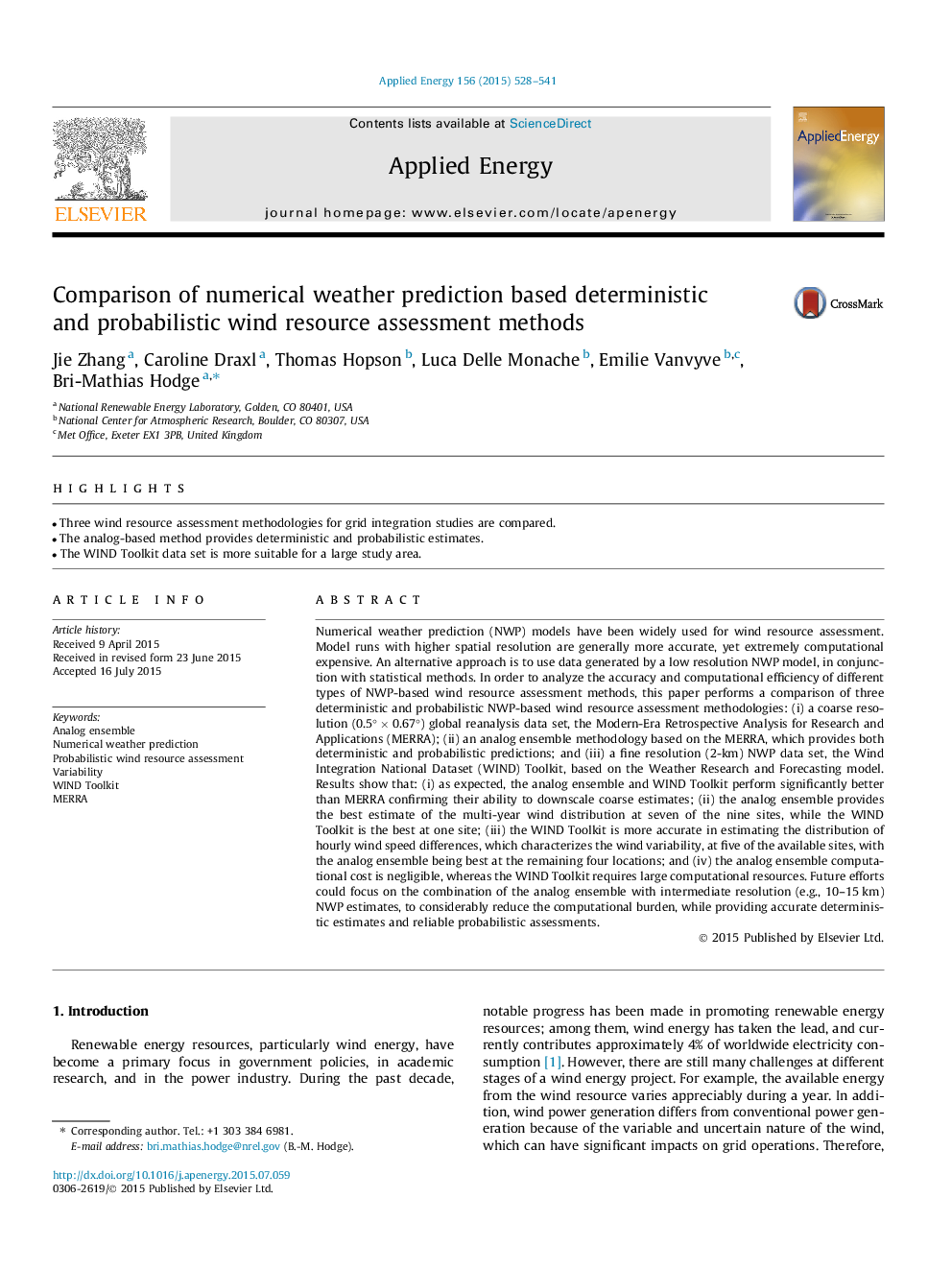| کد مقاله | کد نشریه | سال انتشار | مقاله انگلیسی | نسخه تمام متن |
|---|---|---|---|---|
| 6686298 | 501870 | 2015 | 14 صفحه PDF | دانلود رایگان |
عنوان انگلیسی مقاله ISI
Comparison of numerical weather prediction based deterministic and probabilistic wind resource assessment methods
ترجمه فارسی عنوان
مقایسه مقادیر ارزیابی منابع باد با استفاده از روش پیش بینی آب و هوایی عددی
دانلود مقاله + سفارش ترجمه
دانلود مقاله ISI انگلیسی
رایگان برای ایرانیان
کلمات کلیدی
موضوعات مرتبط
مهندسی و علوم پایه
مهندسی انرژی
مهندسی انرژی و فناوری های برق
چکیده انگلیسی
Numerical weather prediction (NWP) models have been widely used for wind resource assessment. Model runs with higher spatial resolution are generally more accurate, yet extremely computational expensive. An alternative approach is to use data generated by a low resolution NWP model, in conjunction with statistical methods. In order to analyze the accuracy and computational efficiency of different types of NWP-based wind resource assessment methods, this paper performs a comparison of three deterministic and probabilistic NWP-based wind resource assessment methodologies: (i) a coarse resolution (0.5° Ã 0.67°) global reanalysis data set, the Modern-Era Retrospective Analysis for Research and Applications (MERRA); (ii) an analog ensemble methodology based on the MERRA, which provides both deterministic and probabilistic predictions; and (iii) a fine resolution (2-km) NWP data set, the Wind Integration National Dataset (WIND) Toolkit, based on the Weather Research and Forecasting model. Results show that: (i) as expected, the analog ensemble and WIND Toolkit perform significantly better than MERRA confirming their ability to downscale coarse estimates; (ii) the analog ensemble provides the best estimate of the multi-year wind distribution at seven of the nine sites, while the WIND Toolkit is the best at one site; (iii) the WIND Toolkit is more accurate in estimating the distribution of hourly wind speed differences, which characterizes the wind variability, at five of the available sites, with the analog ensemble being best at the remaining four locations; and (iv) the analog ensemble computational cost is negligible, whereas the WIND Toolkit requires large computational resources. Future efforts could focus on the combination of the analog ensemble with intermediate resolution (e.g., 10-15 km) NWP estimates, to considerably reduce the computational burden, while providing accurate deterministic estimates and reliable probabilistic assessments.
ناشر
Database: Elsevier - ScienceDirect (ساینس دایرکت)
Journal: Applied Energy - Volume 156, 15 October 2015, Pages 528-541
Journal: Applied Energy - Volume 156, 15 October 2015, Pages 528-541
نویسندگان
Jie Zhang, Caroline Draxl, Thomas Hopson, Luca Delle Monache, Emilie Vanvyve, Bri-Mathias Hodge,
